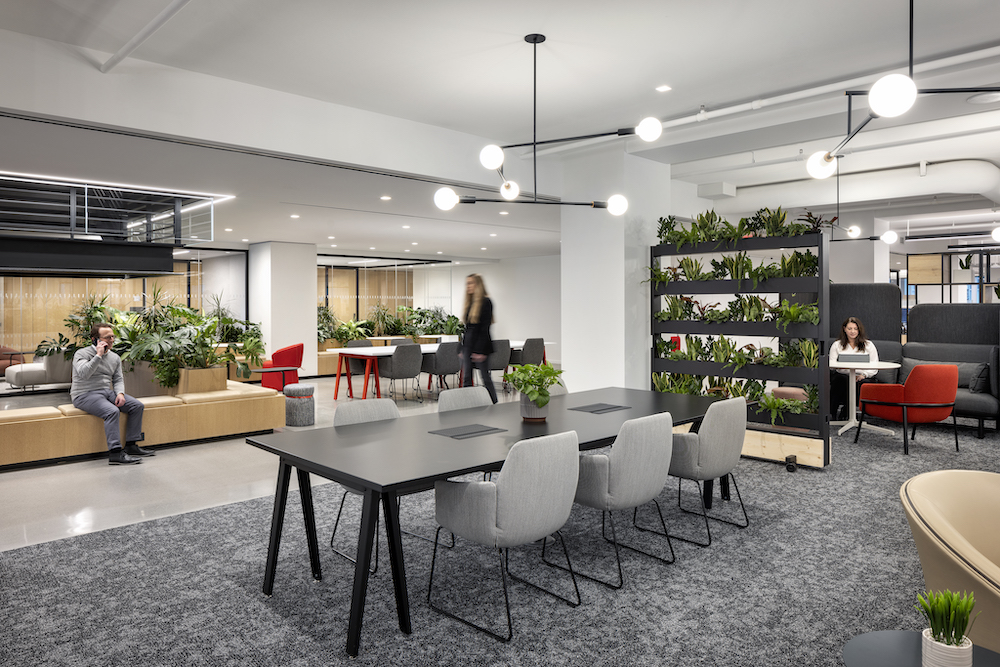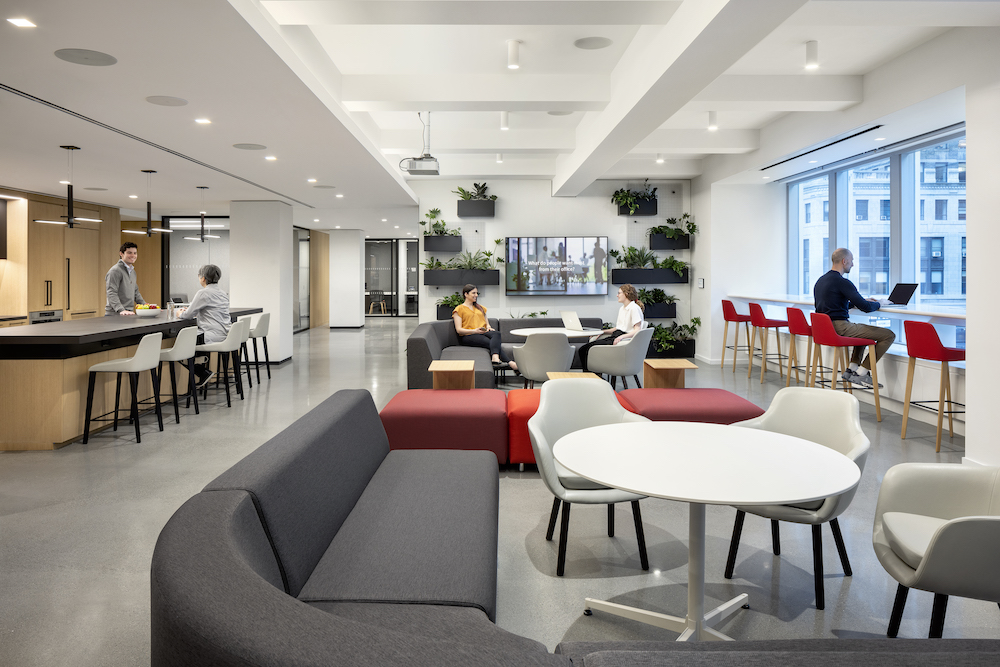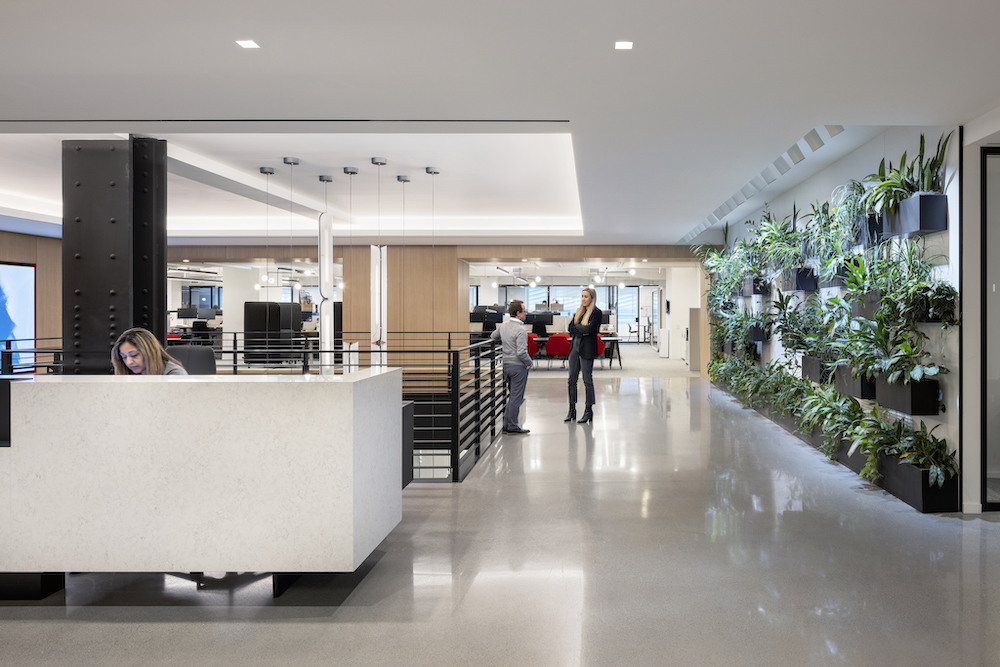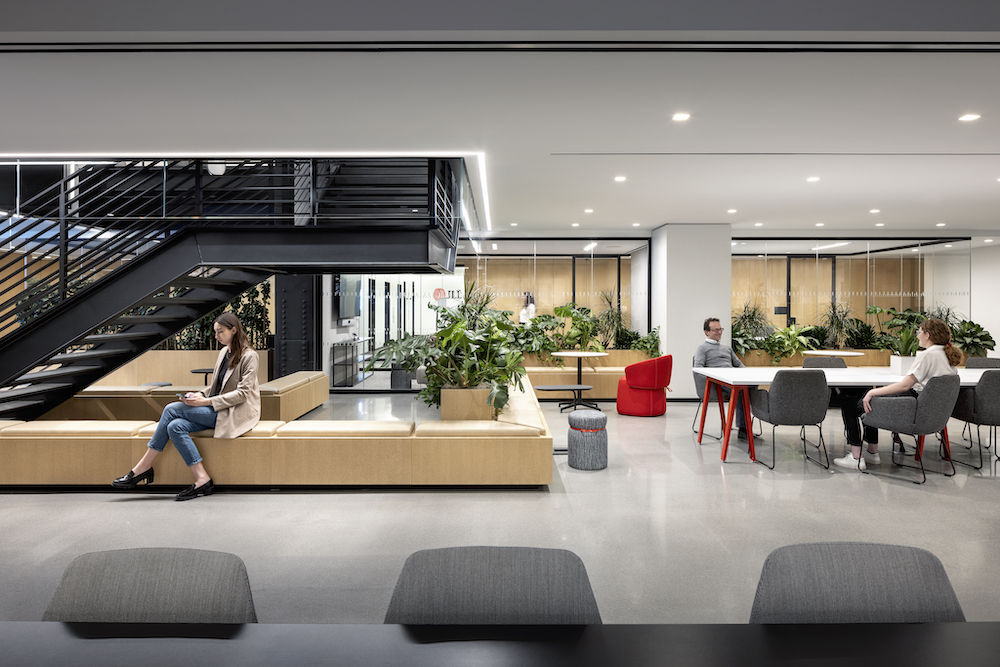Samantha McCormack of TPG Architecture explores how business leaders can apply ESG to their workplace strategies.
In today’s business landscape, tracking, reporting, and communicating environmental, social, and governance (ESG) practices is essential for continued growth and success. Employees and shareholders alike seek transparency, ease of use, and want to see the company values in all decisions. Surprisingly, however, increasing demands for new ESG-minded strategies have yet to produce a clear framework for business leaders to follow––leaving many in the dark about how ESG can or should apply to their organizations.
ESG is personal, meaning each person within an organization should have the same experience of its values as its shareholders. The workplace represents an important opportunity to make this connection, particularly for companies unsure of the future of their real estate strategies, by looking at space as a tool that can enhance and reinforce ESG practices and commitments.
Highlighting Company Values
So where do you start? Almost every request for proposal (RFP) includes a section on ESG. The most meaningful ESG commitments are those that are integrated into clients’ core values and mission tying in with their overall workplace strategy. It is important that design reflects clients in a personal way. The most successful applications change entire business methodologies.

To do so, designers must participate in research exercises with clients to uncover what’s essential culturally. This can be done through interviews, surveys, and curated exercises. Once the research component is complete, careful consideration of space types and material selection takes place. By doing this, design teams can put literal interpretations of company values into their physical space. For example, if the client’s core values include integrity, real wood and stone could be added to the space. We can also incorporate a living wall rather than petrified moss.
On the other hand, if the client’s core value is people and community, large communal spaces in the heart of the workspace can be implemented to foster community building. At a recent workspace project for IEX, one of the firm’s guiding principles was transparency. In order for the design to reflect this value, the design team incorporated an open mesh transparent ceiling system.
What Does This Look Like in the Office?
To properly execute a ESG-focused design within the workplace to align with a brand’s corporate social responsibility goals, a multi-tiered and holistic approach is needed. This includes environmental responsibility, real-time metric markers, internal and iterative benchmarking, and “living” the values.

Environmental Responsibility
The “E” in ESG tends to dominate the conversation, and rightfully so. In space, designers can integrate materials that reduce environmental stressors. Some ways to do, include providing clients with carbon analysis of material options such as carpet and ceiling tiles or adding HVAC set points to reduce consumption. Additionally, sourcing local products and materials helps reduce energy usage and the addition of carbon emissions into the atmosphere. Another way designers can implement environmental responsibility within the workplace is by designing with reducing waste in mind. Designers must strategically design in subtle ways that promote better day-to-day choices through recycling and waste stream awareness. This can be through eliminating single-use paper and plastics, or adding lighting and HVAC set points to reduce consumption.
Real-Time Metric Markers
When ESG practices are woven into employees’ day-to-day work, digital boards can be installed to provide employees and stakeholders with real-time measurements of air quality, and carbon emissions levels within the office. Specifically, measuring volatile organic compounds in the air, ozone levels, smog, water quality, and occupancy density are important metric markers.
Internal and Iterative Benchmarking
ESG goals aren’t static, and space doesn’t have to be either. By outlining benchmarks and creative “rewards” in advance, space can change as new goals are met. For example, conference rooms can be repainted to show employees and visiting stakeholders when changes have occurred visually.

“Living” the Values
Design also physically translates tangible values within the workplace. For example, if transparency is a key component of a company’s ESG strategy, implementing an all-glass design can help underscore that core mission. If promoting wellness is the goal, the addition of efficient fixtures can reduce excessive water use or if improving air quality is important, the utilization of zero-VOC paint throughout the space can limit toxins in the air.
Real Estate Strategy
Another strategy designers can look at is the landlord partnership – it is particularly influential as building selection is the single largest decision affecting the ability to reduce emissions in your real estate strategy. To start, you must look at the building envelope – has it been upgraded? If not, what is the landlord’s stance? Once this happens, a robust view of building systems is necessary. For example, with HVAC, what materials are they submetering? Are there electric or condenser water systems? You must also consider the building and its location to transit. All of these aspects enable you to track changes in your emissions and meet sustainability goals.
Today, implementing ESG into workplace strategies is an iterative process that is more important than ever – and the business must embody it. The most meaningful ESG commitments are those that get integrated into clients’ core values and mission and naturally, tie in with workplace strategy. Through team interviews and curated exercises, designers can help organizations fully embrace the power of ESG.
As a result, designers can integrate environmental responsibility design elements, real-time metric markers, internal and iterative benchmarking, and the “living” values within the workplace while evaluating the real estate strategy.


